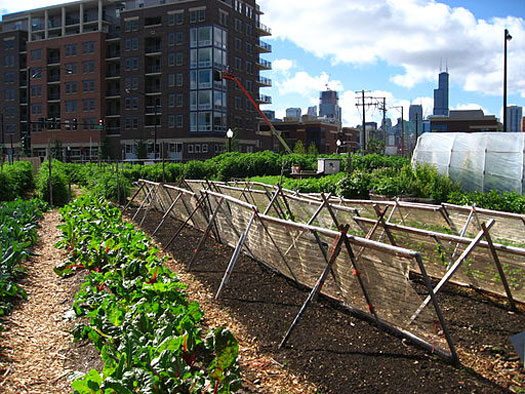
July 28, 2017; San Diego Union-Tribune
A project in the San Diego County area is demonstrating once again that urban farming at the neighborhood level offers a host of benefits, from individuals to communities.
The nonprofit San Diego Housing Corp. and a group of university nursing students have set up a community garden near the Torrey Apartments in El Cajon. Herbs, vegetables, and citrus trees have sprung up in garden boxes in a formerly neglected spot. The produce will add to the diets of the more than 200 residents of the apartment complex, most of whom are low-income.
In addition to the produce garden, the project also offers weekly health checkups and classes on nutrition, exercise, etc. Intangible benefits include community, camaraderie, and companionship.
Statistics are hard to come by, but a report by the National Gardening Association found that the number of households participating in community gardens grew by 2 million between 2008 and 2013. Leading the swell are millennials, particularly in our nation’s urban areas. Stats like that, along with news of hipsters flooding to bankrupt Detroit to start urban farms, can make it seem like community gardens are a recent fad driven by foodie/locavore movements. However, community gardening and urban farming have much earlier roots.
Sign up for our free newsletters
Subscribe to NPQ's newsletters to have our top stories delivered directly to your inbox.
By signing up, you agree to our privacy policy and terms of use, and to receive messages from NPQ and our partners.
As Keith Tidball and Marianne Krasny wrote in Greening in the Red Zone: Disaster, Resilience and Community Greening, “When talking to ‘red zone’ [crisis or disaster] survivors—whether they be war refugees beginning a new life in Dearborn, Michigan; residents of New Orleans’ 9th Ward after Hurricane Katrina; or homeowners struggling to hang on in a largely vacated Detroit—we often hear stories about how the act of planting has been critical to emotional survival and to engendering hope for the future.”
“Most refugees have experienced a profound loss of control over their lives,” Katie Painter, program coordinator for Global Gardens, told NeighborWorks America. Global Gardens helps refugees in Boise, Idaho to cultivate the food they remember from their homelands, engage with the broader community, and support themselves by becoming entrepreneurs. “Many also come from agrarian environments. It’s comforting to do something familiar, and it also draws them out of the perceived safety of their homes to mix with others. Gardening is an act that creates a feeling of empowerment and transcends languages.”
Tidball and Krasny agree; they document studies showing that community gardens lead to more neighbor-to-neighbor assistance in times of general need. Likewise, survey research shows that in low-income neighborhoods, community gardens are associated with an increase in organizing around other neighborhood issues, such as crime prevention.
“We believe that creating an extensive network of community gardens prior to disasters would bolster the capacity for resilience before it is acutely needed,” they conclude in their book.
Detroit offers many case studies of how gardening can be used to connect residents. “Grow a garden, grow a community” is the motto for Feedom Freedom, a group of independent growers in Detroit. Today, they have six lots and five paid staff members. They have a regular flow of volunteers, and have—as hoped—gotten to know everyone in the area—Pam Bailey











